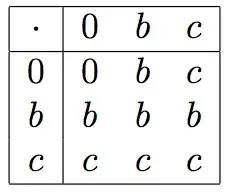Associative law, in mathematics, either of two laws relating to number operations of addition and multiplication, stated symbolically: a + (b + c) = (a + b) + c, and a(bc) = (ab)c; that is, the terms or factors may be associated in any way desired. Source: Brittanica
Following this description, the usual example used to describe this law is: \begin{equation} \ a+(b+c)=(a+b)+c \end{equation} or \begin{equation} \ a(bc)=(ab)c \end{equation}
Since the description (I don't know whether it is valid enough) states that the terms may be associated in any way desired, isn't it also valid to do this in one step without making use of commutative law:
\begin{equation}
\ a+(b+c)=(a+c)+b
\end{equation}
\begin{equation}
\ a(bc)=(ac)b
\end{equation}
Because I think this a + (b + c) has two units, of which a unit also consists of two units. Since associative law states that a child unit can be transferred to another parent unit. Why not transfer c directly to first unit without making use of a + b = b + a.
P.S. I am not very educated in mathematics or logic. Forgive my incorrect tagging. I only seek the explanation of why this doesn't work.
